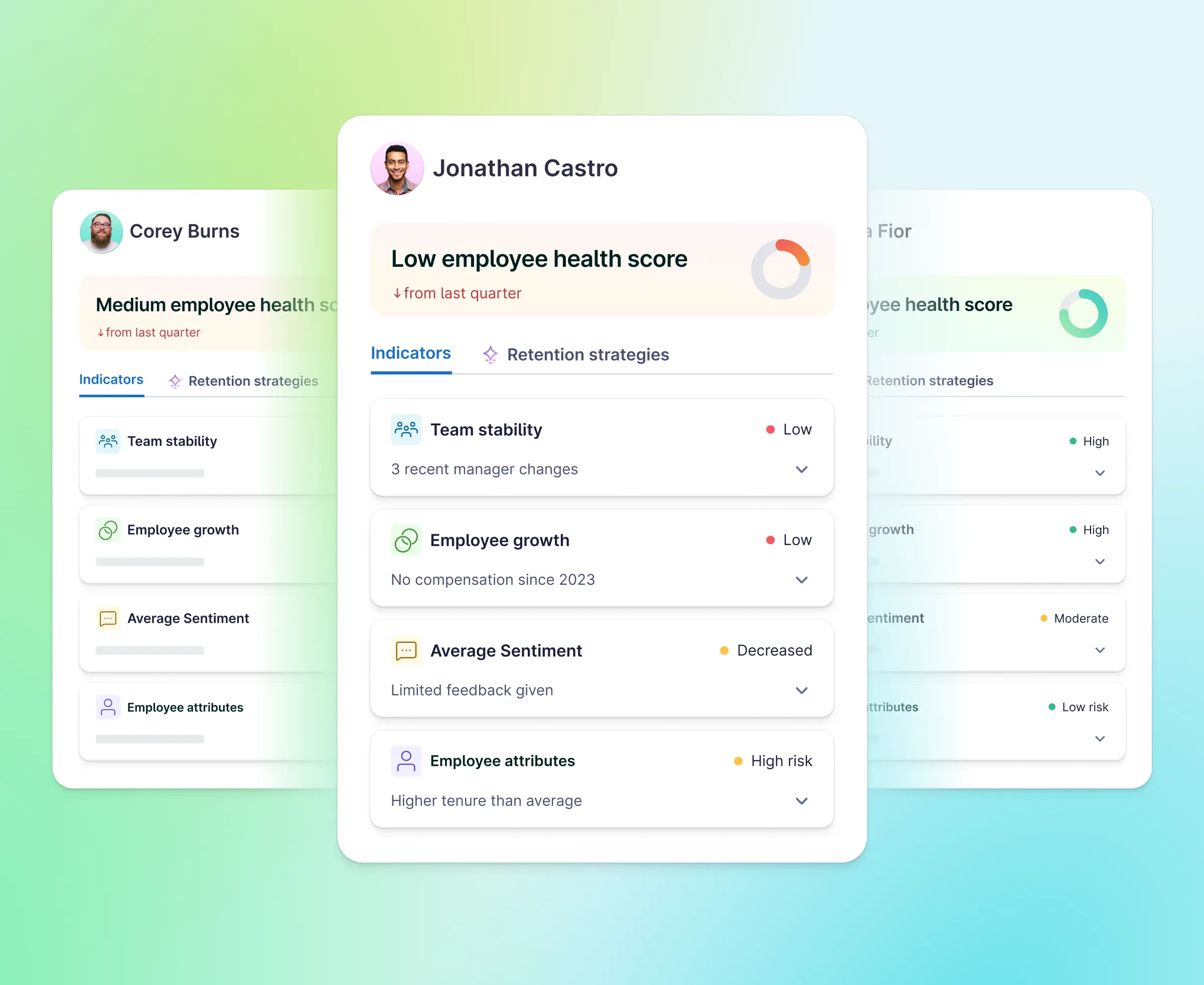Do you find yourself staring blankly at screens and waking up with dread about work? If so, you’re not alone. Burnout affects employees across all industries and career stages. Whether it’s answering coworkers’ emails during dinner or logging back in after putting kids to bed, work-life boundaries have blurred, leaving team members short-tempered, forgetful, and physically ill.
Companies succeed when they prioritize employee wellbeing, preventing burnout before their workforce becomes disengaged or silent in meetings. Yet despite warning signs, many employees hesitate to discuss burnout with managers, fearing it might damage their professional reputation.
“This can absolutely be a difficult dynamic to navigate, but it’s important to be honest and proactive to get ahead of this, before the situation worsens,” said Alison Campbell, a Certified Health and Wellness Coach and founder of unBurnt®, a burnout prevention and workplace resilience company. She said, “The key is approaching it with preparation and clarity, rather than in a moment of overwhelm or reactivity.” This article will provide strategies for discussing burnout with your manager before it gets worse.
What is burnout?
The World Health Organization (WHO) defines burnout as an occupational phenomenon resulting from chronic workplace stress that hasn’t been successfully managed. Burnout is characterized by three key dimensions:
- Emotional exhaustion: Feeling depleted, fatigued, and lacking the energy to face another workday. This often manifests as dreading the start of the workweek, feeling exhausted even after a full night’s sleep, or finding it difficult to motivate yourself for tasks that once interested you.
- Cynicism or detachment: Developing negative or cynical attitudes toward work, colleagues, or clients. You might find yourself becoming more irritable with coworkers, feeling disconnected from your company’s mission, or viewing your work as meaningless.
- Reduced effectiveness: Experiencing a decreased sense of accomplishment and questioning your abilities. Tasks that once came easily might now feel overwhelming, or you might doubt the quality of your work despite evidence to the contrary.
Although heavy workloads can contribute, burnout is more than just being overworked. It strains your emotional relationship with your job and can create a sense of hopelessness that goes beyond temporary fatigue. Because burnout develops gradually — often over months or even years — it can be difficult to recognize until it significantly impacts your wellbeing and performance.
Common work-related causes include:
- Unrealistic expectations
- Lack of clarity around roles
- Poor communication
- Insufficient resources
- Limited autonomy
- Work that conflicts with personal values
- Unhealthy workplace dynamics
“Systemic issues lead to burnout,” said Sarah Skidmore, CEO of The Leadership Hospital®, in our article about driving performance while managing burnout. “What leaders can focus on is that area that they have control over and influence over and really spend time working with the team.”
It’s important to recognize that burnout isn’t just a workplace phenomenon but can affect multiple areas of life. And when it spreads to other areas, it becomes even more difficult to treat, according to Anne Helen Petersen, author and work culture expert. In our All Hands podcast episode on battling burnout, she said, “It is made much more difficult to treat, to recover from, to move away from when burnout is happening in the 360 of someone’s life. Because burnout is oftentimes a proper reaction to feelings of precarity, right? Feelings of insecurity, feelings that the bottom is going to drop out at any moment.”
Why Talking About Burnout Matters
Many employees hesitate to let their boss know about burnout, fearing it might be perceived as weakness, lack of commitment, or inability to handle their responsibilities. This hesitation is understandable but can lead to a worsening cycle where burnout intensifies without intervention, affecting your mental health and overall wellbeing.
Here’s why having this conversation is crucial:
- Declining work performance: Burnout depletes your cognitive resources, affecting your ability to focus, make decisions, and maintain work quality.
- Increasing disengagement: Emotional detachment can develop, leading to a lack of motivation, reduced initiative, and less creative problem-solving — all of which affect team outcomes.
- Risking health: Often associated with burnout, chronic stress can affect both mental and physical health, leading to issues including anxiety, depression, sleep problems, digestive problems, and high blood pressure, according to the American Psychological Association.
- Endangering employment: Unaddressed burnout can lead to performance issues that might result in being placed on a performance improvement plan or losing your job, especially if a manager is unaware of what’s really going on.
- Damaging relationships: When you’re burned out, your patience wears thin, your communication skills suffer, and emotional regulation becomes harder. This can affect your personal life too.
Burnout is not a personal failing, but rather a result of long-term workplace stress. Addressing burnout early through open communication can lead to collaborative solutions, appropriate support, and possibly even role adjustments that better align with your strengths and capacity.
{{rich-highlight-1}}
How to Prepare for the Conversation
A successful discussion depends on your ability to clearly articulate what you’re experiencing, why it’s happening, and what might help. Here’s how to prepare:
Reflect on your symptoms.
Start by documenting the specific ways burnout is manifesting for you. Be honest with yourself about how your energy, attitude, and work-related stress have changed over time. Consider:
- How have your energy level and focus changed compared to six months or a year ago?
- Are you experiencing physical symptoms like headaches, stomach issues, or sleep problems?
- Have you noticed changes in your mood, patience level, or interactions with colleagues?
- Are tasks that once energized you now feeling draining or impossible to start?
Keeping a simple journal for a week or two before the conversation can help you identify patterns and provide concrete examples.
According to Campbell, warning signs might include “decision fatigue or brain fog by mid-morning, irritability or impatience that wasn’t there before, feeling like your day is filled with activity but lacking impact, loss of motivation or dread toward meetings or messages, or beginning to question your own abilities.”
Not sure if what you’re feeling is burnout? Look for the following symptoms:
Determine the cause of your burnout.
Understanding the root causes of your burnout is crucial for developing effective solutions. Michael P. Leiter and Christina Maslach, who created the Maslach Burnout Inventory™ (MBI) psychological assessment, identified six key areas where problems can lead to burnout:
- Workload issues: Is your heavy workload sustainable? Are deadlines realistic?
- Control problems: Do you have input into how your work gets done?
- Reward concerns: Is your compensation fair? Do you receive recognition for your contributions?
- Community challenges: Is the work environment supportive or toxic?
- Fairness questions: Are resources, opportunities, and recognition distributed equitably?
- Values misalignment: Does your work align with your personal values and priorities?
Review your calendar, projects, and communications to identify patterns. Look for recurring stressors, difficult relationships, poor work-life balance, or types of work that consistently drain your energy.
Most people don’t thrive in an environment where they’re doing the same exact thing day in and day out with absolutely no changes. People like to be challenged.
Campbell recommends starting with a personal audit. “Identify what’s driving your stress and burnout: workload, priorities, lack of recovery time. You first need to get clarity for yourself, and then can bring examples, plus ideas to open the conversation constructively,” she said.
Brainstorm solutions.
Before meeting with your manager, consider what adjustments might help alleviate your burnout. This demonstrates proactivity and makes the conversation more productive. Potential solutions might include:
- Workload adjustments: Redistributing tasks, extending deadlines, or clarifying priorities
- Boundary setting: Creating clearer expectations around work hours, after-hours availability, or meeting schedules
- Resource allocation: Obtaining additional support, tools, or training for challenging projects
- Role modifications: Adjusting responsibilities to match your strengths or exploring a new job in the organization
- Schedule changes: Taking days off for self-care or creating protected time for focused work
- Professional development: Accessing training or mentorship opportunities
Campbell said that “the most effective solutions start small and focus on sustainability. Big overhauls often fail because they’re not realistic to maintain over time, in the midst of a busy, full life.” She recommends micro-habits like “calendar buffers: Add 15-minute breaks, twice a day, to step away from screens and reset your nervous system.” She emphasized that you need to “Commit to not working right through them. Treat recovery as part of your workflow, not as a failure.”
Sometimes what people need is simply a new challenge. In our article about driving performance while managing burnout, leadership mentor and author Ashley Cox said, “Most people don’t thrive in an environment where they’re doing the same exact thing day in and day out with absolutely no changes. People like to be challenged. They like to learn new things.”
Create the right space for the conversation.
“Don’t squeeze it into a routine check-in,” said Campbell. “Carve out a separate conversation, and frame the topic in advance. A short note like, ‘I’d love to schedule time to talk about my workload and some ideas I’ve been thinking about to better manage my energy and priorities’ sets the tone.”
Additional preparation steps include:
- Scheduling a dedicated meeting
- Choosing the right format (e.g., in-person, video, phone)
- Preparing documentation of examples
- Anticipating questions
- Setting clear objectives
Once you’ve prepared thoroughly by identifying symptoms, understanding causes, and brainstorming solutions, you can leverage technology to refine your approach before the actual meeting.
{{rich-highlight-3}}
Having the Conversation
The way you approach this discussion can significantly impact how it’s received and its ultimate outcome. Consider these strategies for a productive exchange:
Start with a team mindset.
Begin by expressing appreciation for your manager’s time and maintaining a professional, solution-oriented tone. Campbell said to “signal your commitment. Make it clear you’re on the same team. Acknowledge your dedication to the team’s goals while recognizing you want to sustain your performance and avoid hitting a wall.”
Example opening: “I appreciate you making time for this conversation. I’m committed to doing my best work, which is why I wanted to talk about some burnout symptoms I’ve been experiencing and how we might tackle them.”
Use “I” statements and focus on outcomes.
Frame your experience using “I” statements that describe your observations without placing blame.
Not great: “The team puts too much on my plate.”
Much better: “I’ve noticed I’m struggling to maintain quality when juggling multiple high-priority projects at the same time. I’m concerned this might affect our deliverables to the client.”
Provide specific examples.
Back up your experience with concrete examples:
“Since taking on the additional responsibilities from the restructuring, I’ve had to work late every night, which is affecting my sleep and my decision-making during the day. In yesterday’s strategy meeting, I struggled to contribute meaningfully because I was so exhausted.”
Solve problems collaboratively.
Position the conversation as a mutual problem-solving session:
“Based on my understanding of our priorities and how they affect team members, I’ve identified a few areas where we might be able to adjust expectations or timelines. I’d appreciate your perspective on these ideas and whether you see other approaches that might work better.”
What to Do If It Doesn’t Go Well
Despite thorough preparation, sometimes these conversations don’t go as planned. If this happens:
- Take time to reflect. Consider what was unsatisfying about the response, whether there were miscommunications, and what organizational factors might be influencing your manager’s ability to help.
- Make a second attempt. Schedule a follow-up conversation where you can provide additional information, frame the discussion differently, or suggest a structured approach like a 30-day adjustment plan.
- Explore alternative support channels. Check other resources like HR representatives, employee resource groups, mentors, skip-level meetings, or employee assistance programs that offer mental health support.
- Document your experience. Record how burnout is affecting your performance and health, along with dates and notes from conversations you’ve had about it. Documentation provides context if needed later.
- Assess your long-term options. If your current role cannot accommodate needed changes, explore whether a different team or role might be better for your wellbeing.
How Lattice Supports Employee Wellbeing Conversations
Lattice can facilitate healthier manager-employee relationships and help address employee burnout before it becomes severe. Lattice’s forthcoming tool, Employee Health, will specifically help spot early warning signs of burnout and provides trend analysis, enabling more proactive interventions.
By initiating a discussion about burnout with your manager, you’re not only advocating for yourself but also potentially creating positive change for your team. The conversation can benefit everyone.
{{rich-highlight-2}}
Utilizing Tools During the Conversation
Lattice has several tools for a more productive conversation. For example, Lattice Grow helps companies address burnout and implement effective employee development plans for their unique needs. Here’s what you get:
- Individual Development Plans (IDPs): Empower employees to map their careers and crush their goals.
- 1:1 Integration: Keep growth top of mind in every check-in, whether it’s weekly, monthly, or another cadence.
- Developmental Reviews: Create space for regular “Grow convos” and progress tracking, with automated reminders.
- Career Tracks: Standardize, centralize, and highlight paths toward career advancement, enabling equitable job leveling.
Using AI to Prepare for a Burnout Conversation
AI tools can be valuable as you prepare to discuss burnout with your manager. They are useful in these areas:
- Drafting your message: Use AI to help write an email requesting a meeting or refine what you want to say without sounding like you’re complaining. Example prompt: “Draft a professional email requesting a meeting with my manager to discuss workload challenges and burnout concerns.”
- Summarizing feedback and check-ins: Use AI to review past performance feedback or one-on-one notes to track when you feel most overwhelmed, looking for patterns. Example prompt: “Identify recurring themes related to stress or workload concerns in these meeting notes from the past three months.”
- Role-playing the meeting: Practice the conversation with AI simulating different manager responses — supportive, neutral, or skeptical. Ask for suggested responses. Example prompt: “How might my manager respond to my burnout concerns? First show me supportively, then cynically. Then suggest ways I can respond.”
- Clarifying talking points: Prompt AI to transform vague feelings into actionable specifics. Don’t just say, “These deadlines are overwhelming.” Ask for help explaining the business impact. Example prompt: “Help me articulate how compressed deadlines are affecting my work quality.”









